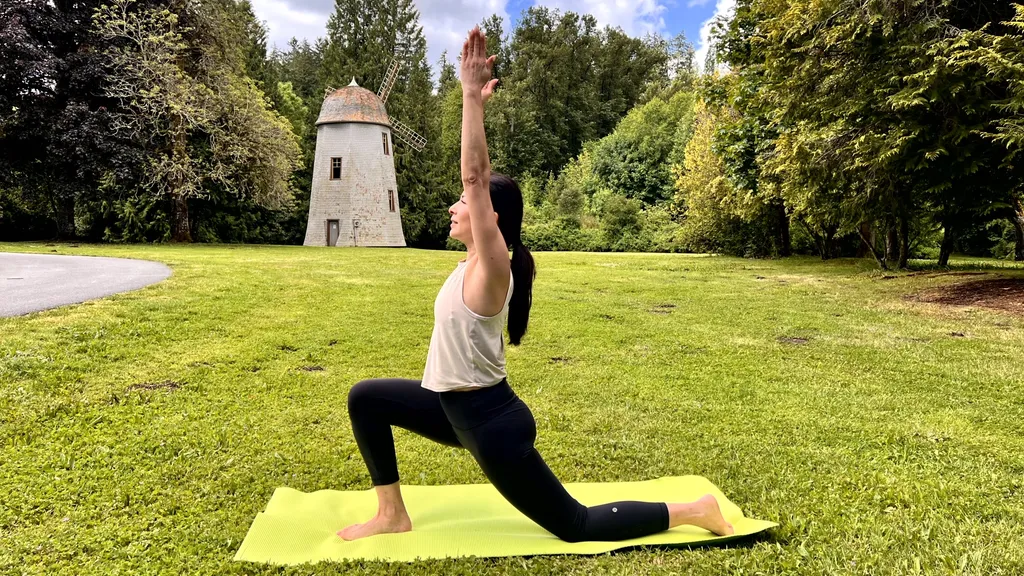Stress levels naturally rise and fall throughout the day, especially when you face unexpected challenges or inconveniences. In moments of high tension, your body can slip into fight-or-flight mode, causing elevated blood pressure, shallow breathing, and a sense of being flustered or overwhelmed.
Yoga Practice: 15-Minute Breath-Led Flow to Reduce Stress and Boost Mental Clarity
A short yoga practice can be the perfect solution. Taking just 15 minutes to pause, move, and breathe deeply can reset both your mind and body—helping you feel calmer, more energized, and better prepared for what’s ahead.
Yoga instructor Maylen Arroyo Alvarez, founder of the emotional resilience platform Recoupia, has designed a breath-led yoga practice to help release stress and restore mental balance.
“Fifteen minutes of yoga and mindfulness can transform your mood, posture, energy, and mental clarity for the rest of the day,” says Arroyo Alvarez.
Why Breath-Led Yoga Helps with Stress
Breath-led movements—known in yoga as pranayama—increase oxygen flow to your muscles and brain, helping you feel more alert and awake. Physical poses like Warrior II and Downward Dog boost circulation, sending fresh blood to vital organs and the brain.
As your breath and movement synchronize, your nervous system shifts from fight-or-flight to a balanced parasympathetic state, reducing fatigue and lowering stress hormones like cortisol. Additionally, a consistent yoga practice triggers serotonin and endorphin release, improving mood and emotional resilience.
The 15-Minute Stress-Relief Yoga Practice
1. Centering & Breath Awareness (1 min)
- Sit comfortably, close your eyes, and inhale deeply through your nose.
- Exhale fully through your nose. Continue for 50 seconds.
- Set a one-word intention for the day (e.g., clarity, energy, gratitude).
2. Cat-Cow Stretch (1 min)
- On hands and knees, inhale into Cow Pose (arch back, lift chest).
- Exhale into Cat Pose (round spine, chin to chest).
- Flow gently, awakening your spine.
3. Downward Dog (1 min)
- From hands and knees, tuck toes, straighten legs, and lift hips into a triangle shape.
- Push heels toward the mat, lengthen your spine, and breathe deeply.
4. Low Lunge with Arm Flow (3 min)
- Step right foot between hands, left knee to floor.
- Inhale, sweep arms overhead; exhale, lower hands to mat or prayer position.
- Flow between these positions for 90 seconds per side.
5. Warrior II to Side Angle Flow (3 min)
- From standing, step right foot back into a wide lunge, left knee bent.
- Extend arms parallel to the floor (Warrior II).
- Move into Side Angle Pose (left forearm on thigh or hand to floor, right arm overhead).
- Flow between the two for 90 seconds per side.
6. Wide-Leg Forward Fold (1 min)
- Step feet wide, hinge at hips, and fold forward.
- Let your head hang; sway gently side to side.
7. Seated Forward Fold (1 min)
- Legs extended in front, inhale arms up, exhale fold forward toward feet.
- Hold for five breaths.
8. Seated Spinal Twist (1 min)
- Cross-legged, twist right (right hand behind back, left hand on knee).
- Hold for five breaths; switch sides.
9. Final Centering & Savasana (3 min)
- Sit comfortably, hands on lap or in prayer, take deep breaths.
- Revisit your intention.
- Lie down in Savasana, allowing your body to fully relax.
Mental Health Benefits of This Yoga Practice
- Reduces Anxiety: Activates the parasympathetic nervous system for calmness.
- Boosts Mood: Increases serotonin and endorphin release.
- Enhances Focus: Improves mental clarity and concentration.
- Relieves Physical Tension: Loosens tight muscles linked to stress.
- Encourages Mindfulness: Helps you stay present and grounded.
Frequently Asked Questions (FAQ) –
Q1: How often should I do this yoga practice for stress relief?
Daily practice is ideal, but even 2–3 times a week can improve mood and reduce stress.
Q2: Can beginners do this yoga practice?
Yes. All poses are beginner-friendly, and modifications can be made for flexibility or mobility concerns.
Q3: How does yoga practice help mental health?
Yoga regulates stress hormones, improves emotional resilience, and supports better sleep—key factors in maintaining mental well-being.
Q4: What time of day is best for this yoga practice?
Morning yoga can set a positive tone for the day, but this flow works anytime you feel stressed or need a mental reset.
Q5: Can I do this yoga practice at work?
Yes—many poses can be adapted to smaller spaces, making it suitable for home, office, or travel.







